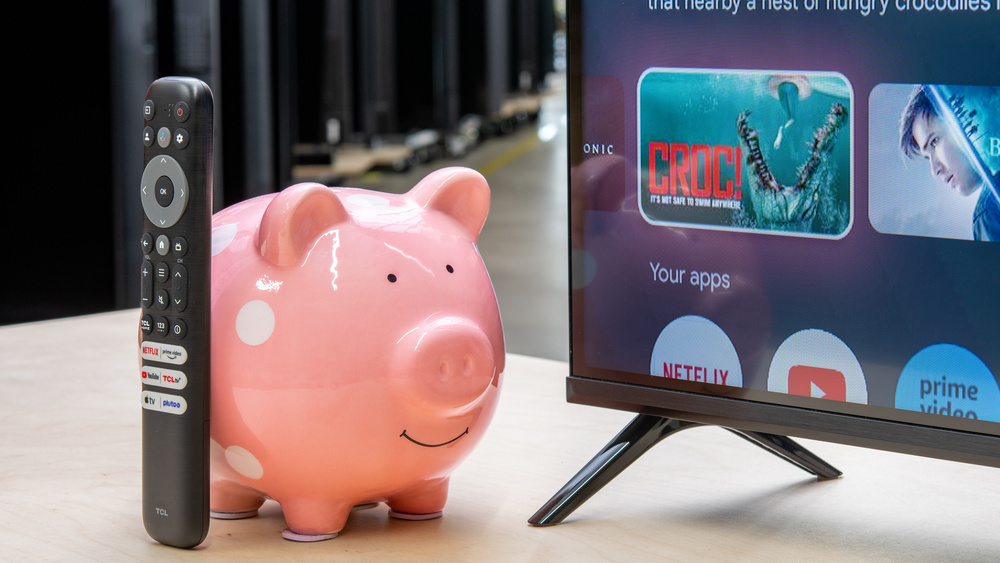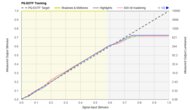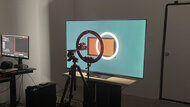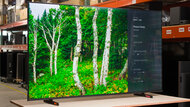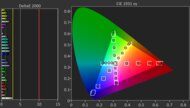If you have limited cash and are looking for the best budget 4k TV, you don't have to spend a ton of money to get a decent display that's good enough for watching your favorite shows and movies. There are a lot of budget models on the market, and it can be hard to figure out which ones perform the best. Whether a TV is high-end or entry-level, we put it through the same meticulous testing process to see how it performs. Even if you don't have a ton of money, you still want a TV that's bright enough to use in a room with some lights on, has good enough contrast that the image doesn't look washed out, displays vibrant colors that make the image pop, and has capable smart features so you don't need to buy a separate streaming device. Through testing, we can determine which budget models are worth buying.
Below are our recommendations for the best budget televisions. You can also see our recommendations for the best TVs under $500, the best TVs under $1,000, and the best-sounding TVs. Look at the best budget soundbars if you need a soundbar but don't want to spend too much. You can also vote on which TVs you want us to buy and test. To learn more about this year's models, check out our 2025 TV lineup page.

We buy and test dozens of TVs yearly, taking an objective, data-driven approach to deliver results you can trust. Our testing process is complex, with hundreds of individual tests that take over a week to complete. Most of our tests are done with specially designed test patterns that mimic real content, but we also use the same sources you have at home to ensure our results match the real-world experience. We use two main tools for our testing: a Colorimetry Research CR-100 colorimeter and a CR-250 spectroradiometer.
-
Best Budget TV
 Mixed Usage7.1Home Theater7.2Bright Room7.0Sports7.1Gaming7.2Brightness6.5Black Level7.6Color7.2Processing (In Development)7.0Game Mode Responsiveness7.9Motion Handling (Broken)7.6Resolution:4kNative Refresh Rate:144HzScreen Finish:GlossyType:LEDSub-Type:VADolby Vision:YesSee all our test resultsSizes:55" 65" 75" 85" 98"
Mixed Usage7.1Home Theater7.2Bright Room7.0Sports7.1Gaming7.2Brightness6.5Black Level7.6Color7.2Processing (In Development)7.0Game Mode Responsiveness7.9Motion Handling (Broken)7.6Resolution:4kNative Refresh Rate:144HzScreen Finish:GlossyType:LEDSub-Type:VADolby Vision:YesSee all our test resultsSizes:55" 65" 75" 85" 98"The best budget TV we've tested is the TCL QM6K. What separates it from similarly priced models from other brands is its effective local dimming feature, so you get impressively deep blacks in a dark room, although there's some noticeable haloing. Combined with its wide color range and decent processing, the TV provides solid overall picture quality. It even has good SDR brightness, which makes it usable in a room with some lights on. It's also just bright enough in HDR for highlights to stand out, so HDR content looks pretty good. Furthermore, it supports Dolby Vision and HDR10+, so you're covered when it comes to HDR formats.
What's most impressive about this affordable model is its wide array of modern features. It has two HDMI 2.1 ports that support 4k @ 144Hz, 1080p @ 288Hz, and VRR, making it a great option for both console and PC gamers on a budget. It even has decently fast pixel transitions, so motion blur is kept to a minimum. If you're looking for a budget-friendly TV that punches well above its weight class, the TCL QM6K is an excellent option.
-
Best Premium Budget TV
 Mixed Usage7.8Home Theater7.9Bright Room8.0Sports7.9Gaming7.8Brightness7.8Black Level8.4Color7.5Processing (In Development)7.7Game Mode Responsiveness8.0Motion Handling (Broken)7.5Resolution:4kNative Refresh Rate:144HzScreen Finish:GlossyType:LEDSub-Type:VADolby Vision:YesSee all our test resultsSizes:55" 65" 75" 85" 98"
Mixed Usage7.8Home Theater7.9Bright Room8.0Sports7.9Gaming7.8Brightness7.8Black Level8.4Color7.5Processing (In Development)7.7Game Mode Responsiveness8.0Motion Handling (Broken)7.5Resolution:4kNative Refresh Rate:144HzScreen Finish:GlossyType:LEDSub-Type:VADolby Vision:YesSee all our test resultsSizes:55" 65" 75" 85" 98"If you like the TCL QM6K but want even better picture quality, the best budget smart TV for those who can spend a bit more is the TCL QM7K. It has much better black levels than the QM6K, so you get deeper blacks in a dark room with a bit less haloing around highlights. The TV also displays punchier colors and has superior image processing, so it looks better in any context. Its biggest advantage over the lower-end model is that it's much brighter and has superior reflection handling, meaning it's well-suited for use in bright rooms. That brightness advantage also means it delivers more impactful highlights in HDR.
It has the exact same gaming features as the QM6K, so it's fully compatible with modern gaming consoles and pairs well with powerful gaming PCs. Pixel response times are a bit quicker than they are on the cheaper model, which leads to slightly smoother motion. If you're willing to spend a bit more, you likely won't be disappointed by the QM7K, as it's a very versatile model that performs well across the board.
-
Best Cheap TV
 Mixed Usage6.0Home Theater5.8Bright Room6.3Sports6.0Gaming6.2Brightness5.6Black Level4.9Color6.8Processing (In Development)6.3Game Mode Responsiveness6.7Motion Handling (Broken)7.0Resolution:4kNative Refresh Rate:60HzScreen Finish:GlossyType:LEDSub-Type:VADolby Vision:YesSee all our test resultsSizes:43" 50" 55" 65" 75" 85" 100"
Mixed Usage6.0Home Theater5.8Bright Room6.3Sports6.0Gaming6.2Brightness5.6Black Level4.9Color6.8Processing (In Development)6.3Game Mode Responsiveness6.7Motion Handling (Broken)7.0Resolution:4kNative Refresh Rate:60HzScreen Finish:GlossyType:LEDSub-Type:VADolby Vision:YesSee all our test resultsSizes:43" 50" 55" 65" 75" 85" 100"The best cheap TV is the Hisense QD6QF. It doesn't have local dimming, so blacks look grayish, which leads to an image that looks a bit flat. Bright colors look muted, and dark colors aren't very rich, but since the TV still displays a wide range of colors, the image doesn't look lifeless. Unfortunately, it's too dim in HDR for highlights to truly stand out, so HDR content looks lackluster. The TV is just bright enough to use in a room with a few overhead lights on and not be distracted by reflections, but visibility is an issue in bright rooms.
You won't find HDMI 2.1 or many other modern gaming features on this model, but it still supports 1440p @ 120Hz with VRR, which is a nice feature for gamers on a strict budget. However, input lag is quite high when gaming at 120Hz. You can also game in 4k @ 60Hz if you prefer a more detailed image with less input lag. Unfortunately, pixel transitions are a bit slow, so fast motion is quite blurry.
Notable Mentions
-
Hisense U75QG:
The Hisense U75QG is similar to the TCL QM7K, but it offers better peak brightness. Unfortunately, the Hisense makes HDR content look much brighter than intended and has more apparent motion blur due to its slower pixel transitions. Since the TCL offers clearer motion, has superior black levels, and offers 1080p @ 288Hz, it's the better TV overall.
See our review -
Hisense U65QF:
The Hisense U65QF is a brighter alternative to the TCL QM6K. Unfortunately, the Hisense really overbrightens HDR content, so it doesn't stay true to the content creator's intent. The TCL offers the more complete package, with better black levels, superior accuracy, 1080p @ 288Hz, and smoother motion.
See our review -
TCL S551G:
The TCL S551G is a good alternative to the Hisense QD6QF. The Hisense is brighter, has better black levels, and has an edge with colors, so it offers better image quality.
However, the TCL supports 1080p and 1440p @ 120Hz with a full VRR range and low input lag, making it slightly better for gamers who care most about performance.
See our review
Recent Updates
Oct 24, 2025:
Replaced the Hisense U6N with the TCL QM6K, the Hisense U7N with the TCL QM7K, and the Hisense A7N with the Hisense QD6QF. We also refreshed the Notable Mentions.
Jun 03, 2025:
We removed the TCL QM7/QM751G QLED from the Notable Mentions and mentioned it alongside the Hisense U7N instead since the TVs are so similar. We also added the Panasonic W95A to the Notable Mentions and updated some text for clarity.
Jan 09, 2025:
Added the TCL S5/S551G as a Notable Mention and confirmed the accuracy of our current picks.
Oct 17, 2024:
Confirmed the accuracy of our picks and updated the Notable Mentions.
Aug 22, 2024: Replaced the Hisense U6/U6K with the Hisense U6/U6N in the 'Best Budget TV' category and refreshed text throughout for clarity.
All Reviews
Our recommendations above are what we think is currently the best budget smart TV for most people in each price range. We factor in the price (a cheaper TV wins over a pricier one if the difference isn't worth it), feedback from our visitors, and availability (no TVs that are difficult to find or almost out of stock everywhere).
If you would like to do the work of choosing yourself, here is the list of all our TV reviews, with a price limit of $650. Be careful not to get too caught up in the details. While no TV is perfect, most TVs are great enough to please almost everyone, and the differences are often not noticeable unless you really look for them. Below is a list of budget TVs we've reviewed over the years, but keep in mind that we've changed our scoring over time, so older models score higher than they would in 2025.
